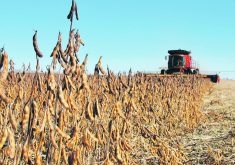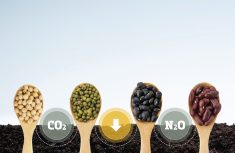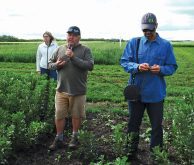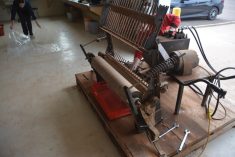With all the attention on the potential for life on Mars lately, the Crop Science Society of America is turning attention to foods best suited to supporting life there.
In a release issued last week, the society notes that in the soon-to-be-released movie “The Martian,” the main character, when astronaut Mark Watney (played by Matt Damon), is stranded on Mars he turns to potatoes to survive.
The movie character creates a lab “garden” and is able to survive off the potatoes — after calculating how many calories he would need to survive until a rescue mission could arrive.
Read Also

Still hard to predict precise fertilizer payback
Despite decades of advances, international research finds no clear answer for where and when adding nutrient will fail to boost growth.
Scientists from the Crop Science Society of America (CSSA), said adding pulses to the mix would make a good thing better.
Pinto beans provide protein, fibre and essential minerals.“Nutritional diversity is key for survival,” says Roch Gaussoin, a professor at University of Nebraska. Watney calculates he may need to live for four years before rescue.
“Spuds are great for calories but it’s hard to beat pulses for nutritional quality,” says Gaussoin. “Both plants would be easy to carry into space and would require minimal space to grow when compared to many other crops. They are also adaptable to controlled environment production, versus being in the field.” Gaussoin is the current president of CSSA.
“Pinto beans would be the perfect nutritional partner with the movie’s potatoes,” says Janice Rueda, a scientist with ADM Edible Bean Specialties.
In addition, “pinto beans would also have a positive impact on the agricultural production in a challenging environment like Mars. Like all pulse crops, beans fix nitrogen into the soil and require very little water to grow — especially when compared to other protein sources.”
As well, every part of the bean plant is edible. According to Mike Grusak, a research plant physiologist with the USDA-ARS and a professor at Baylor College of Medicine, “The leaves are a source of several essential vitamins, fatty acids, and antioxidants. The antioxidants are important for life under the higher radiation load on Mars, relative to Earth. Even bean pods are edible too, and another source of these nutrients and phytochemicals.” Grusak is president-elect of CSSA.
The UN declared 2016 as the International Year of Pulses (IYP).















